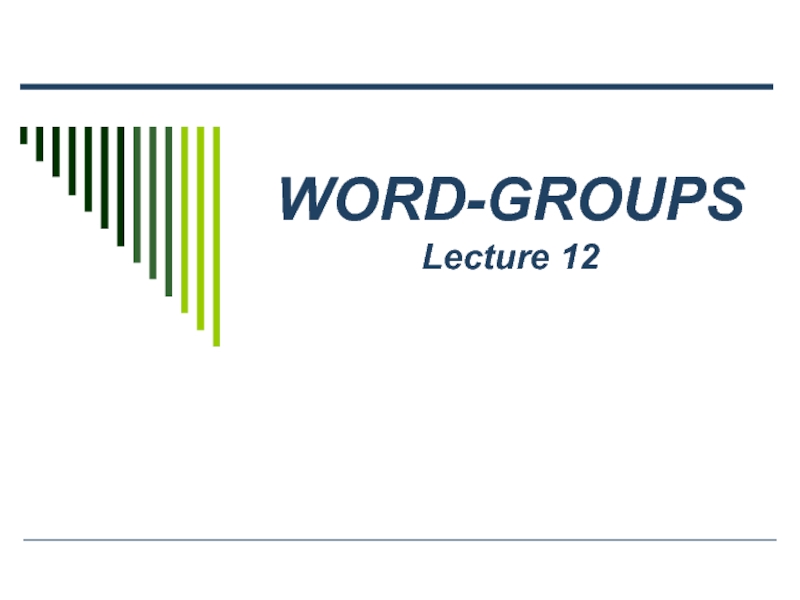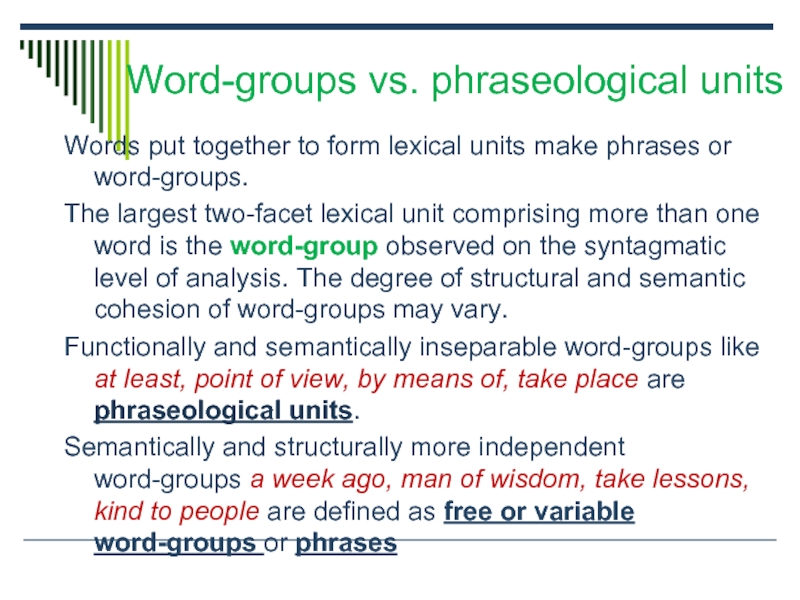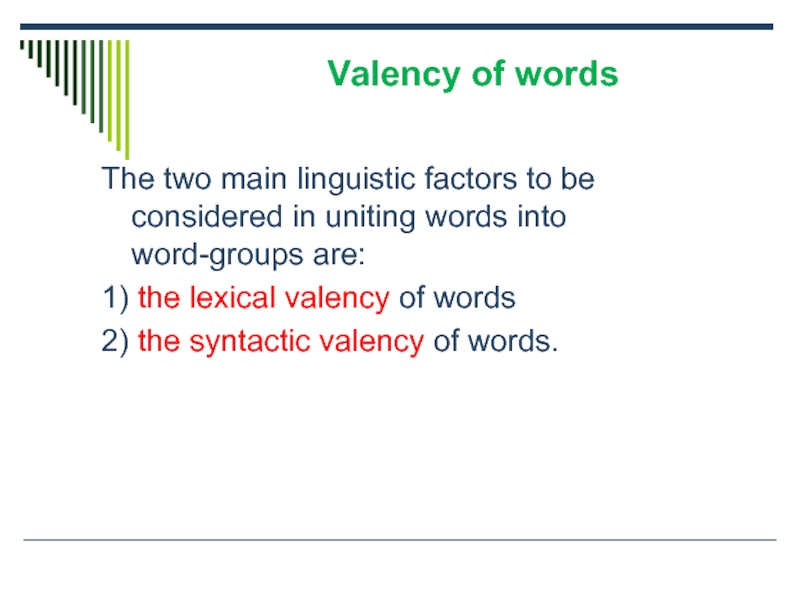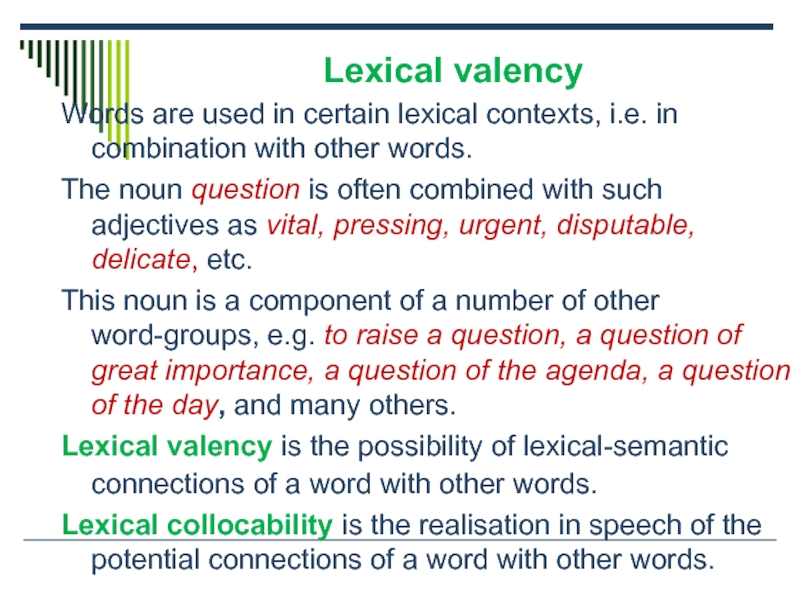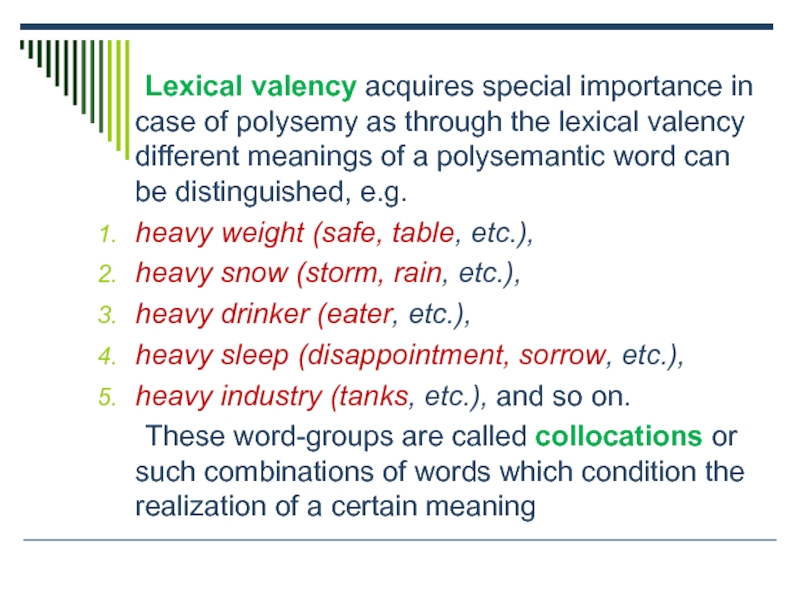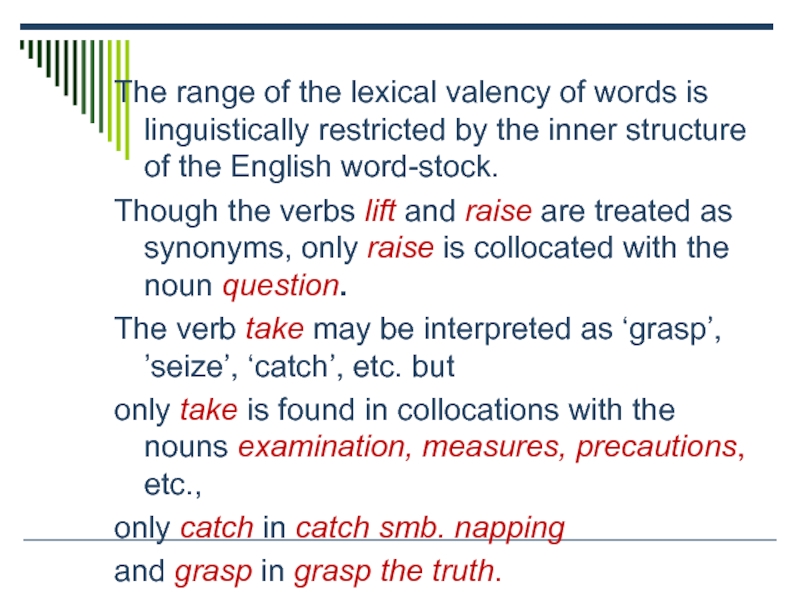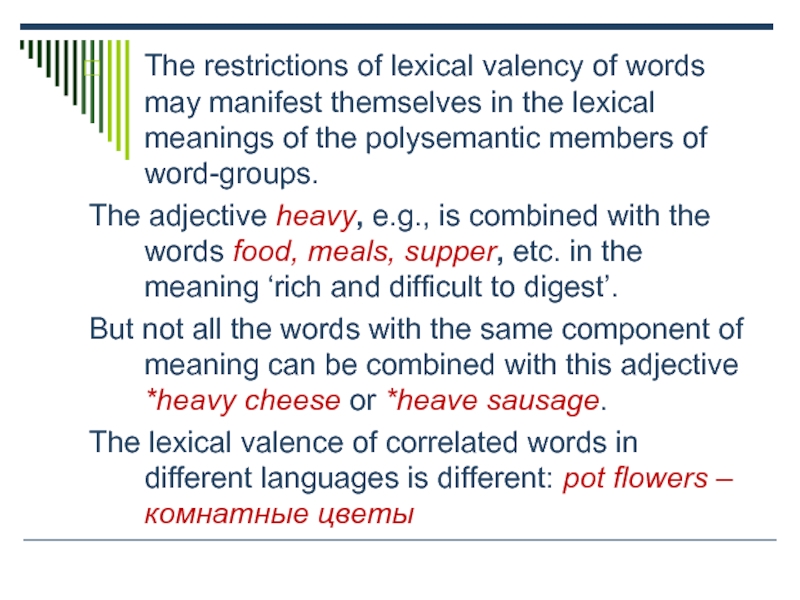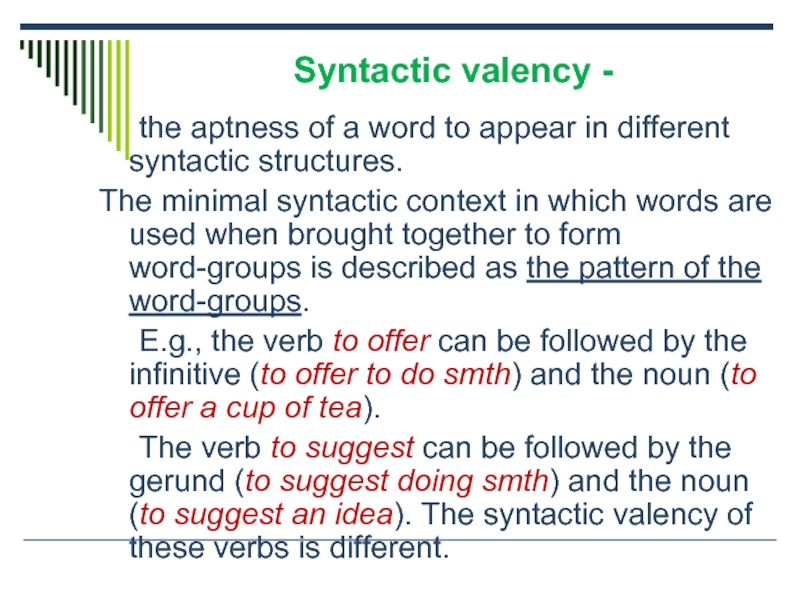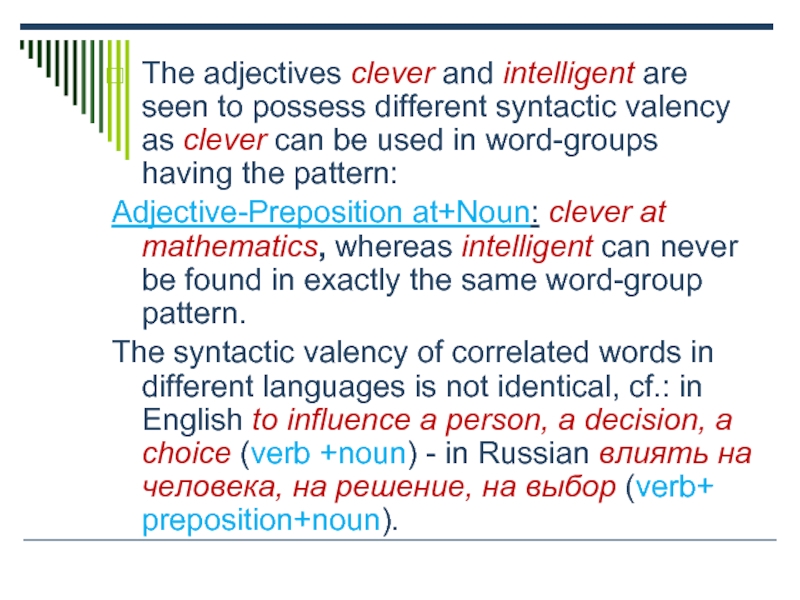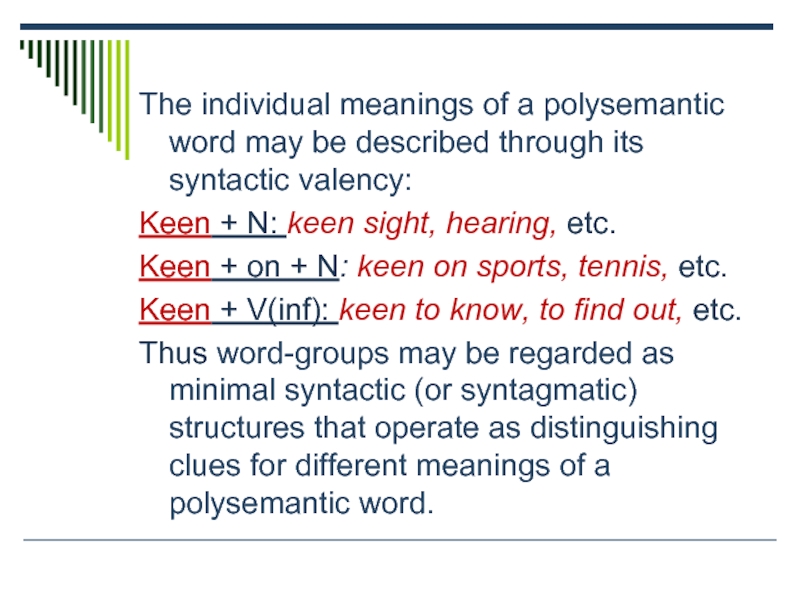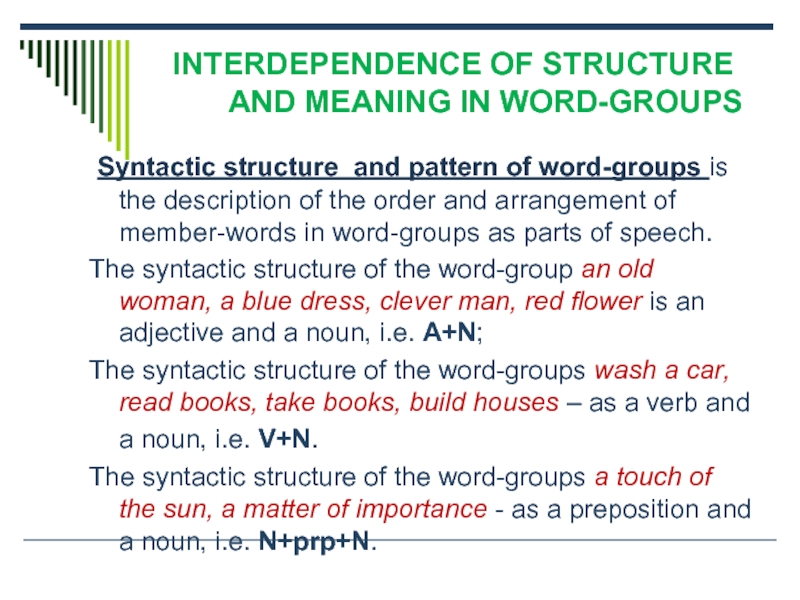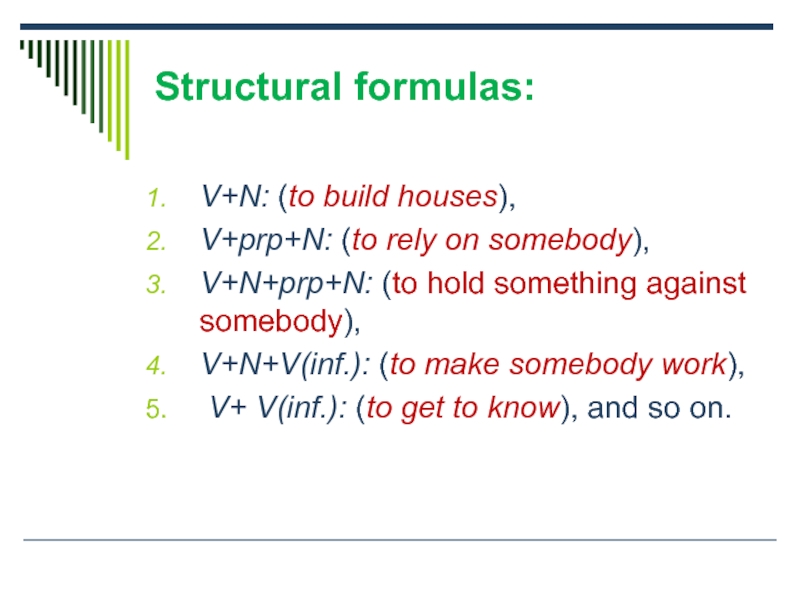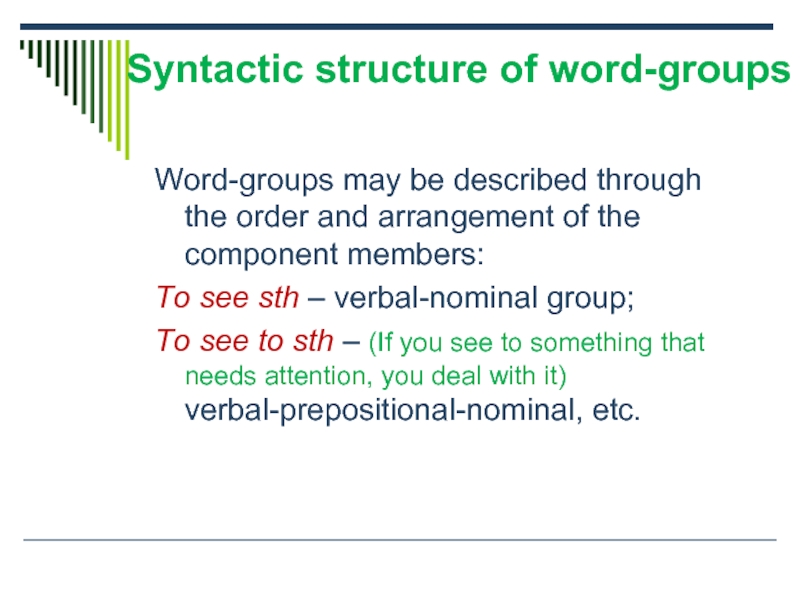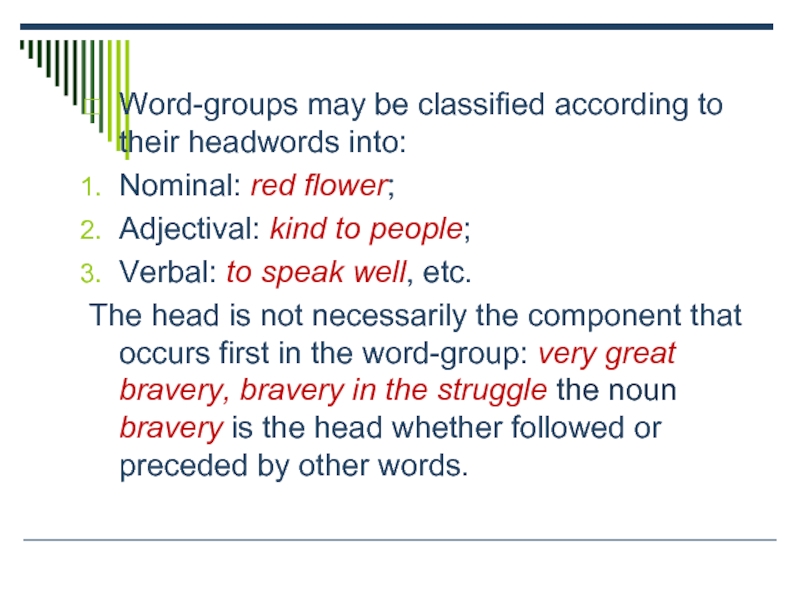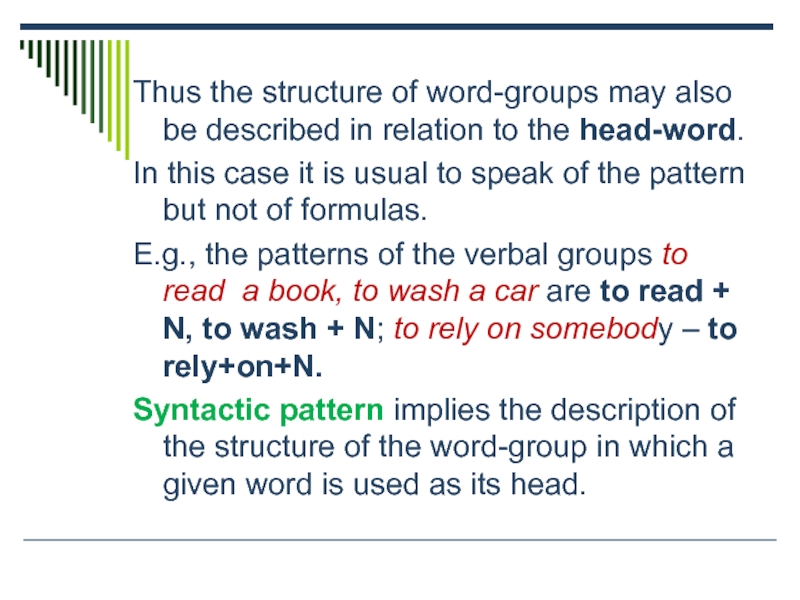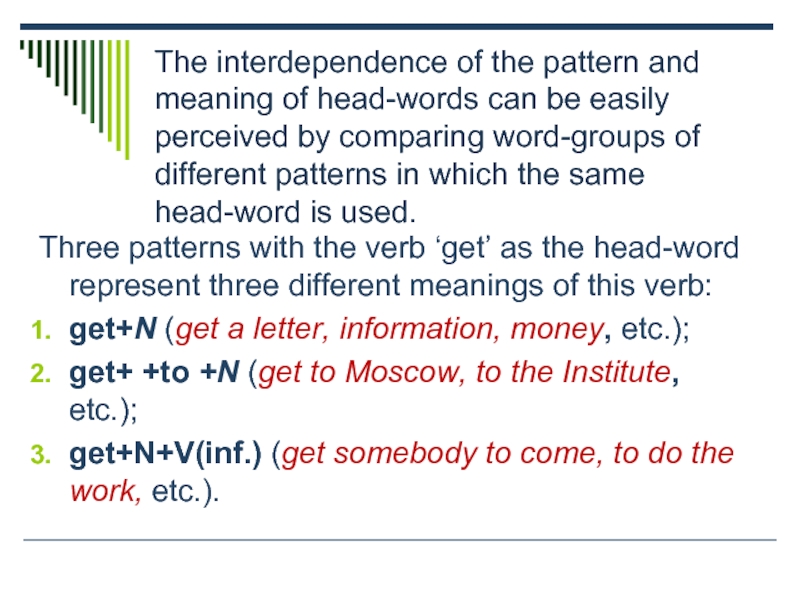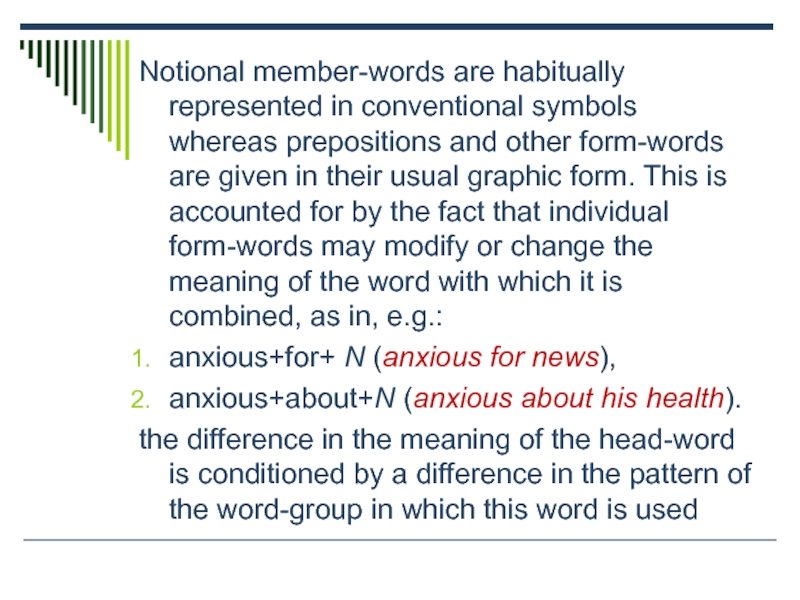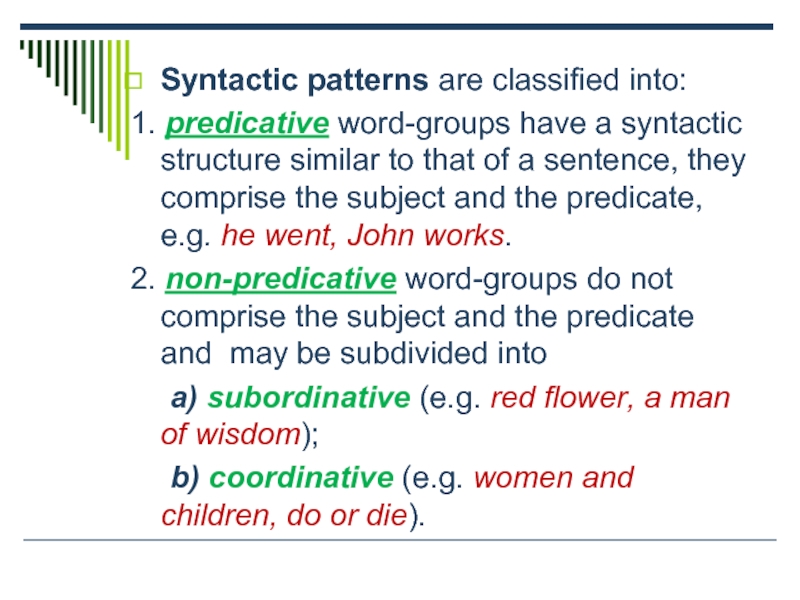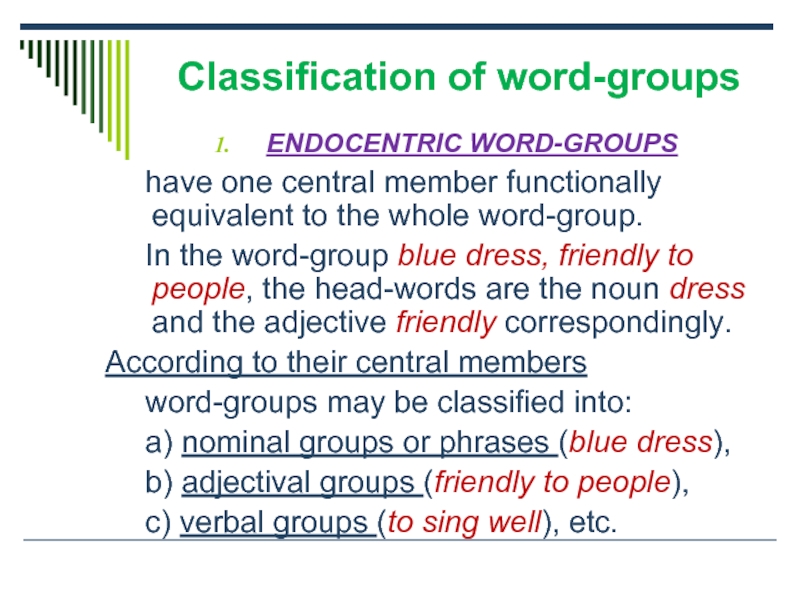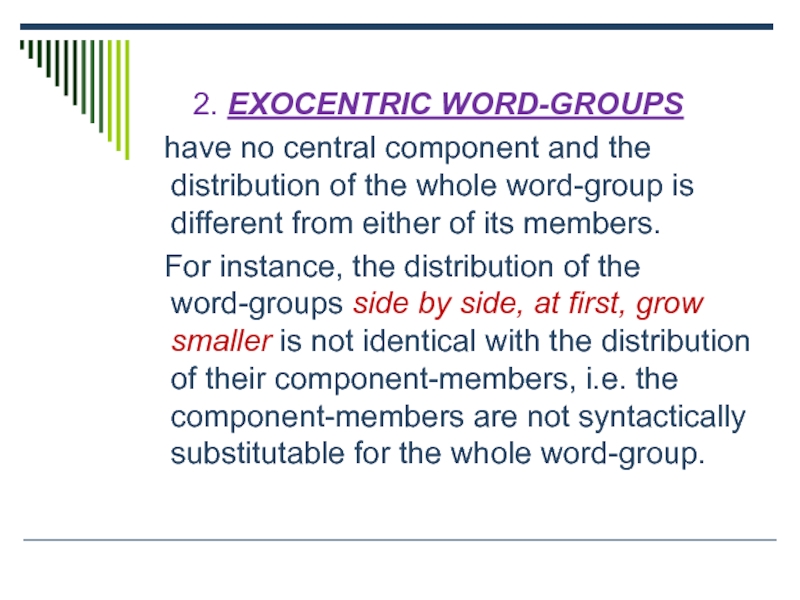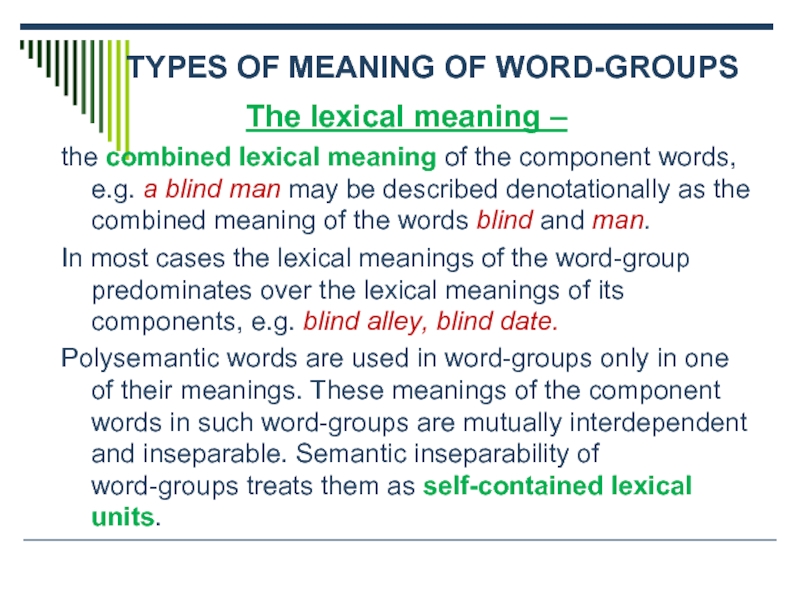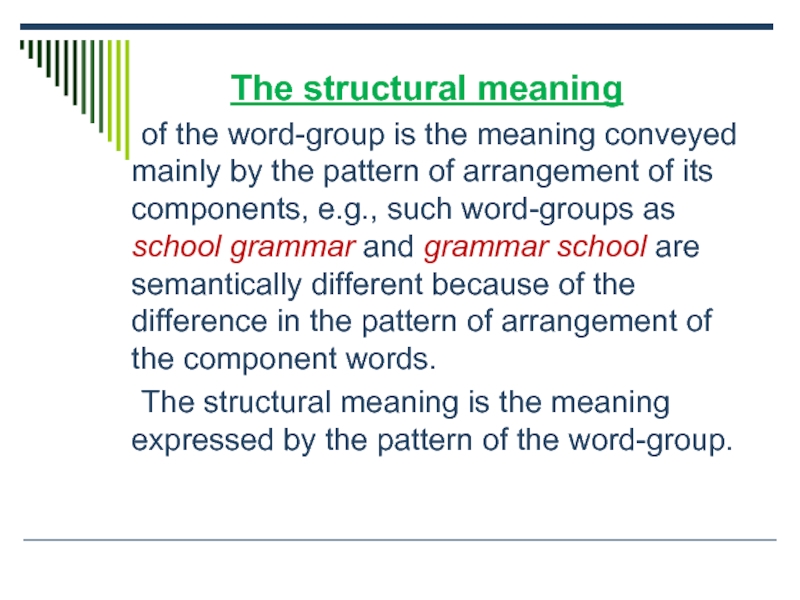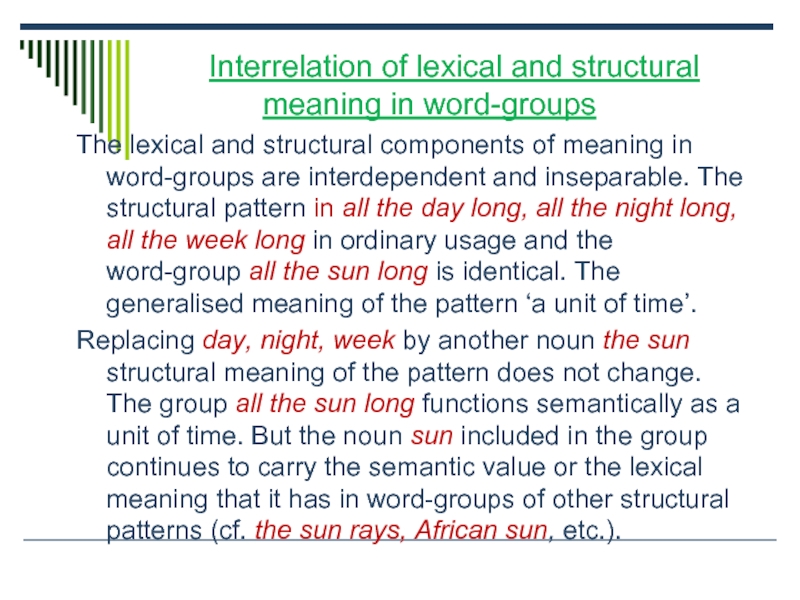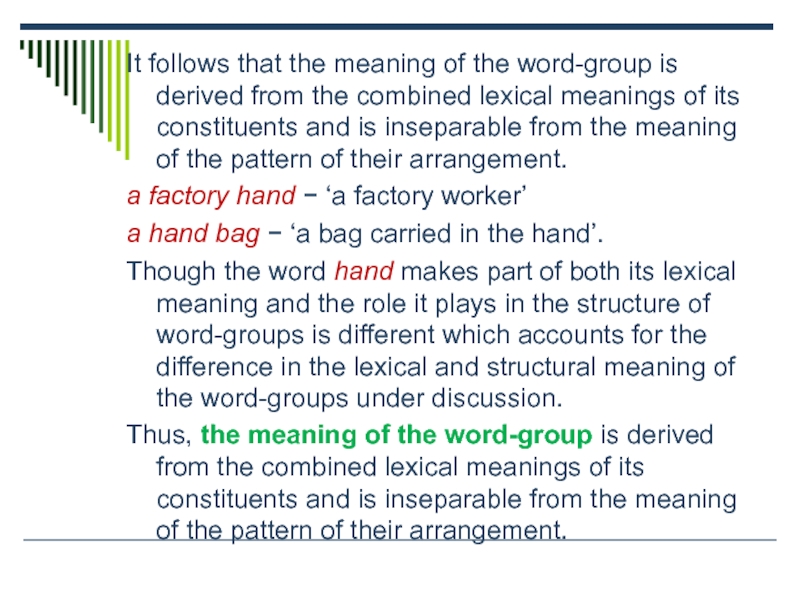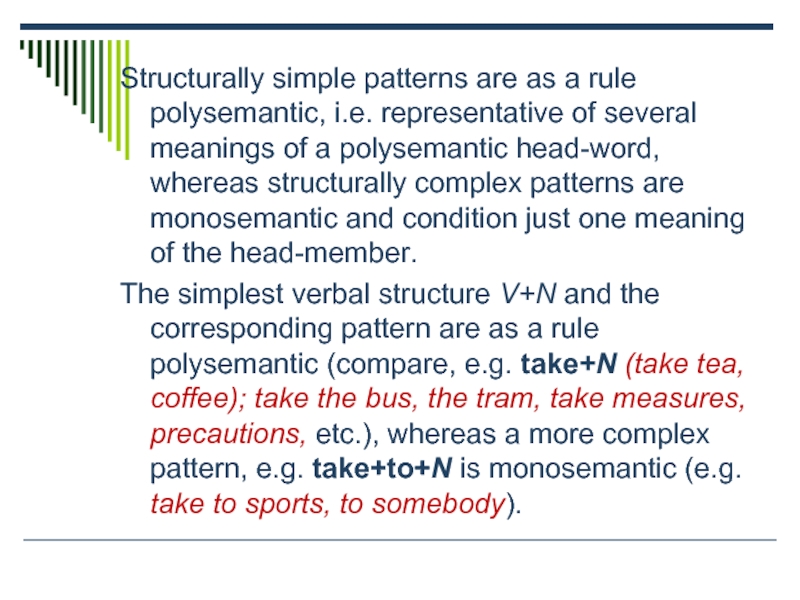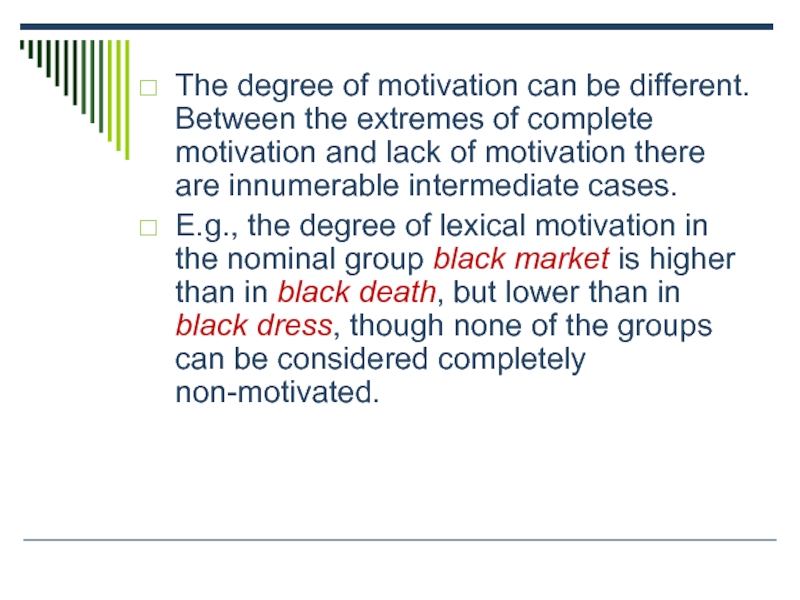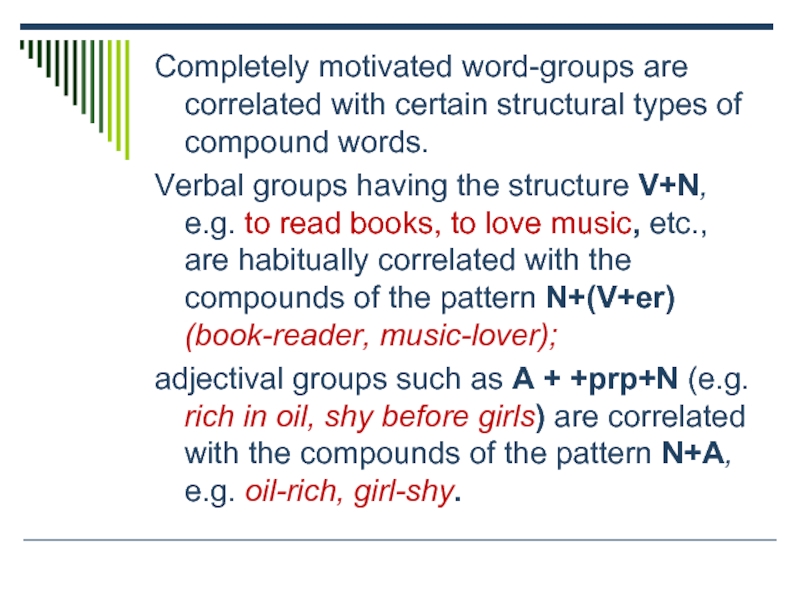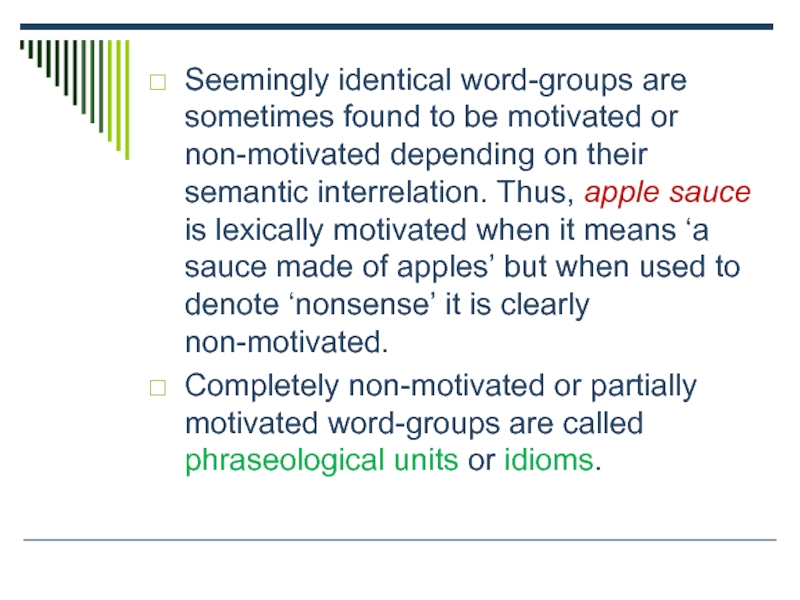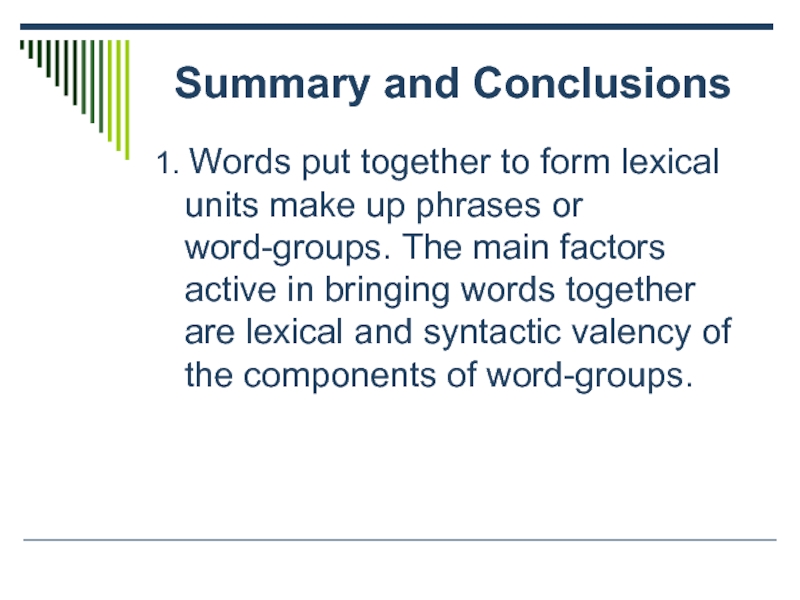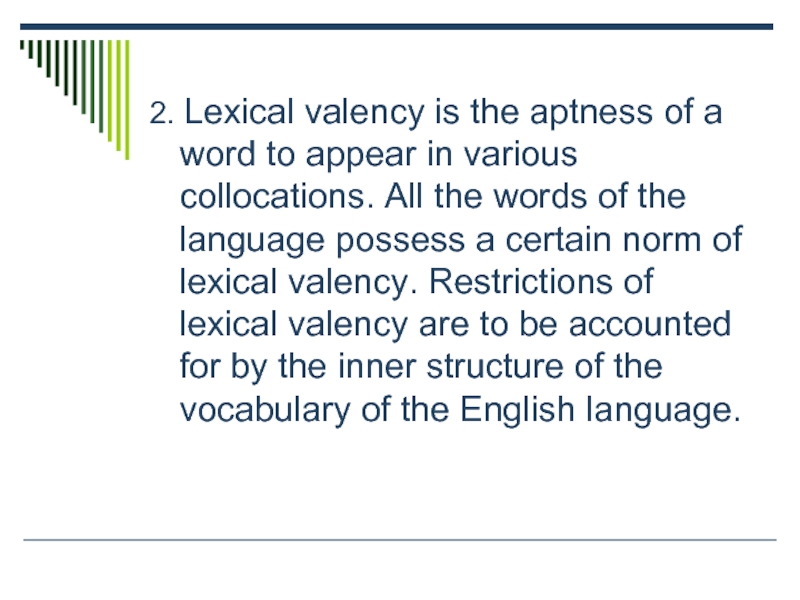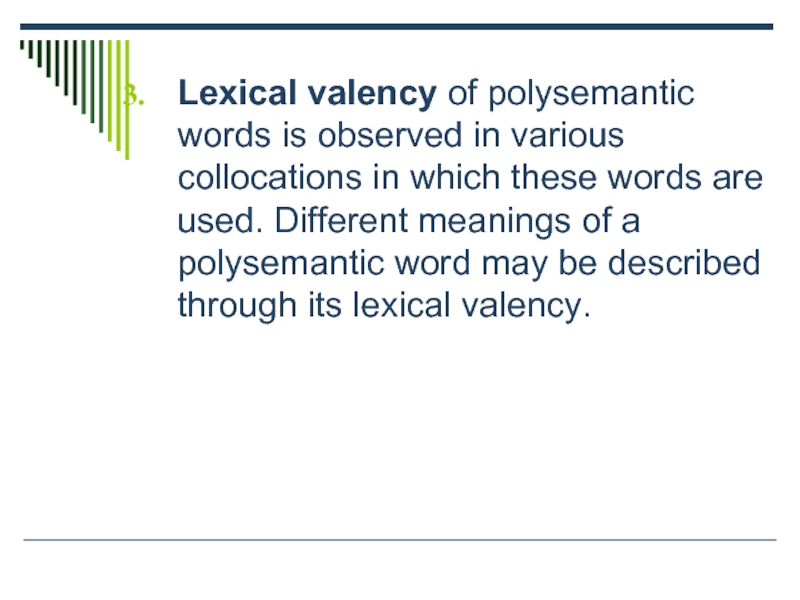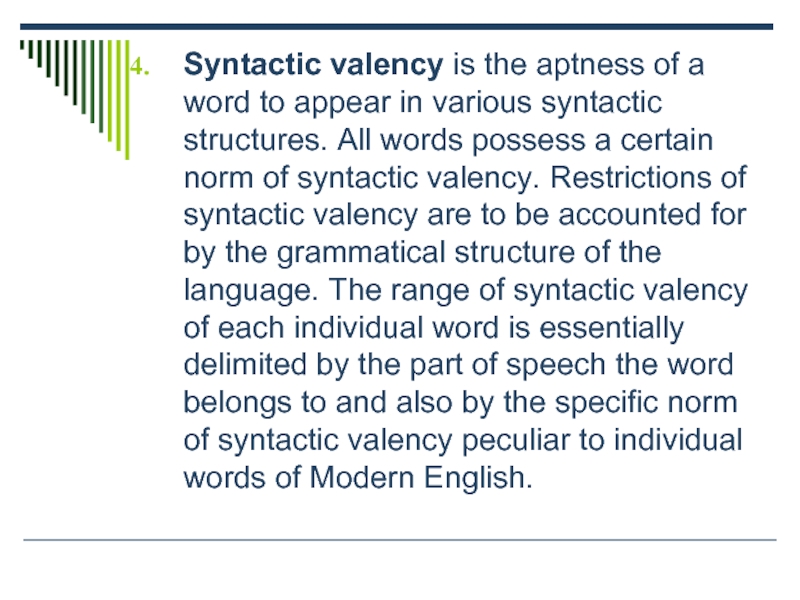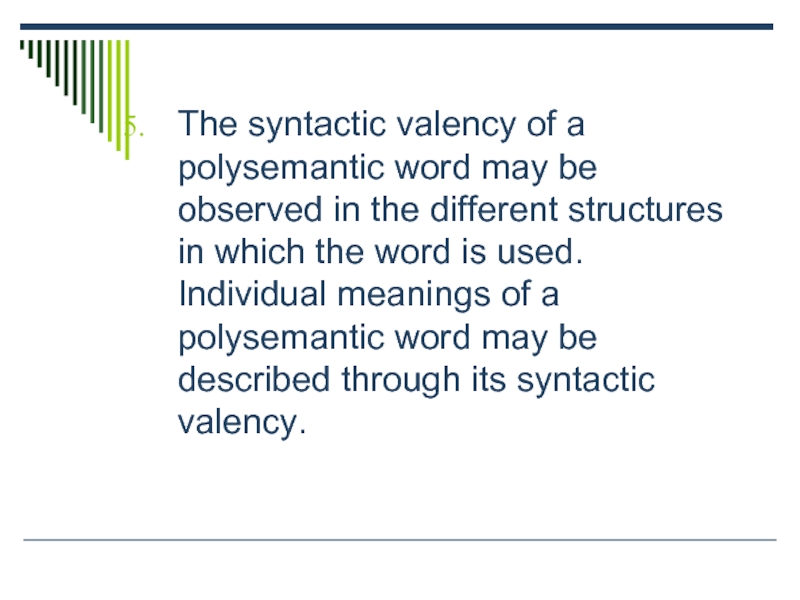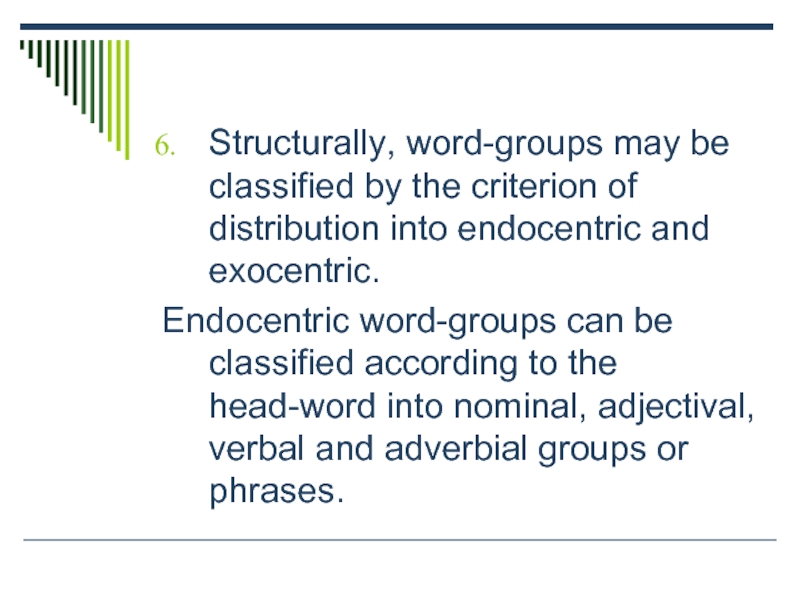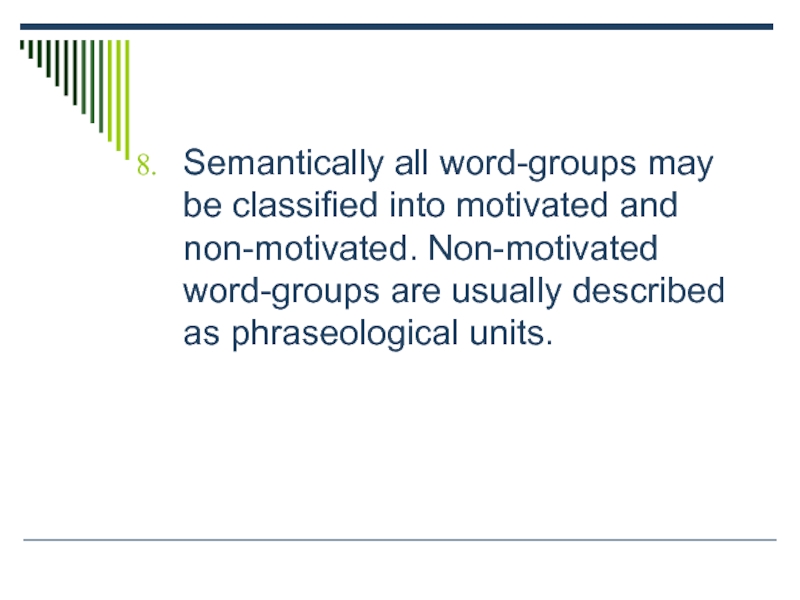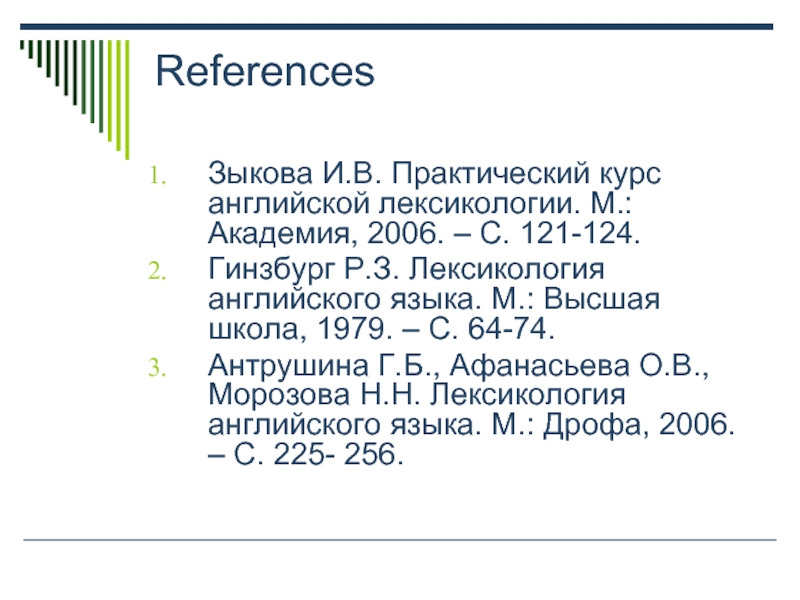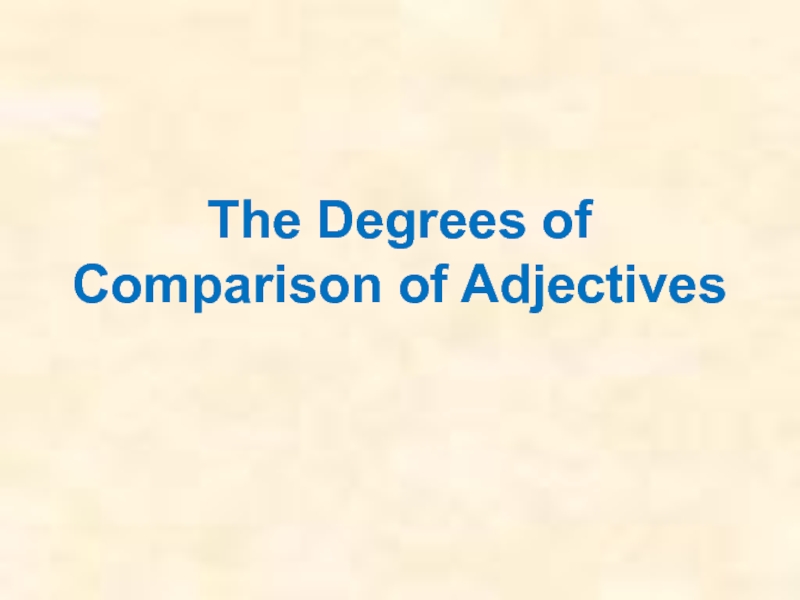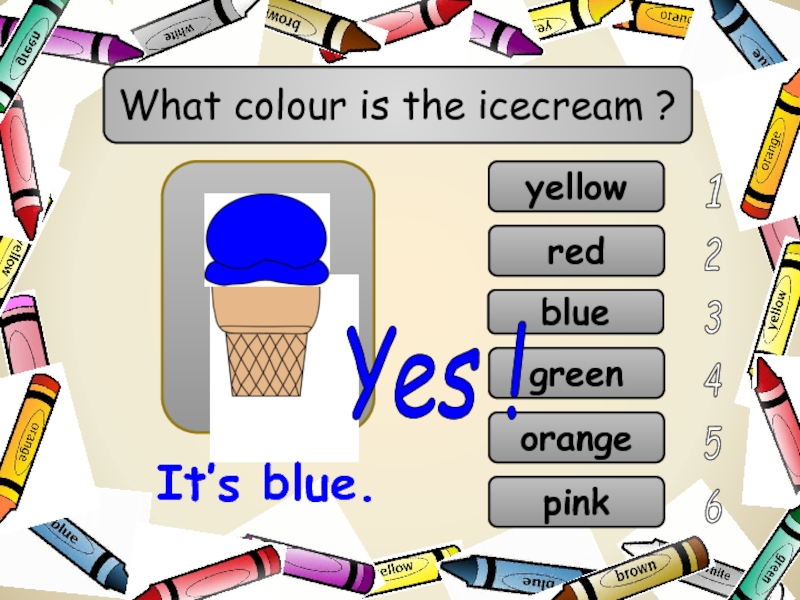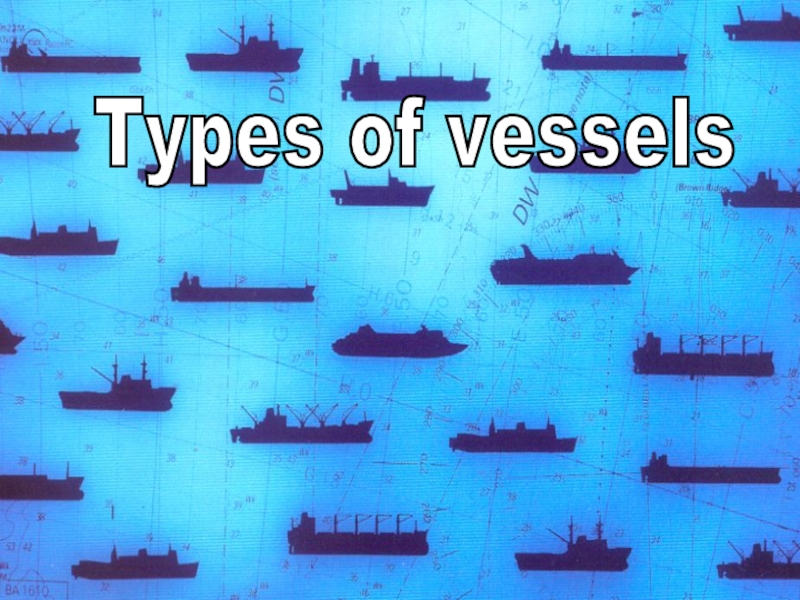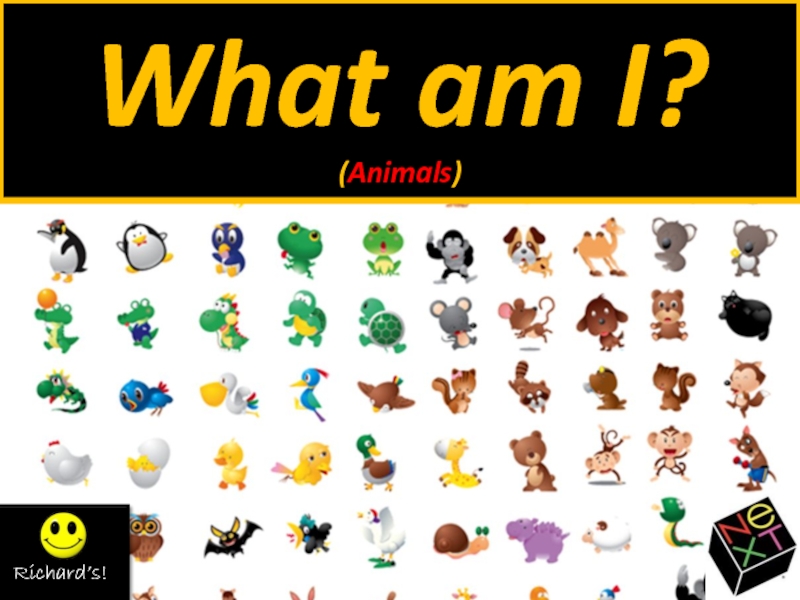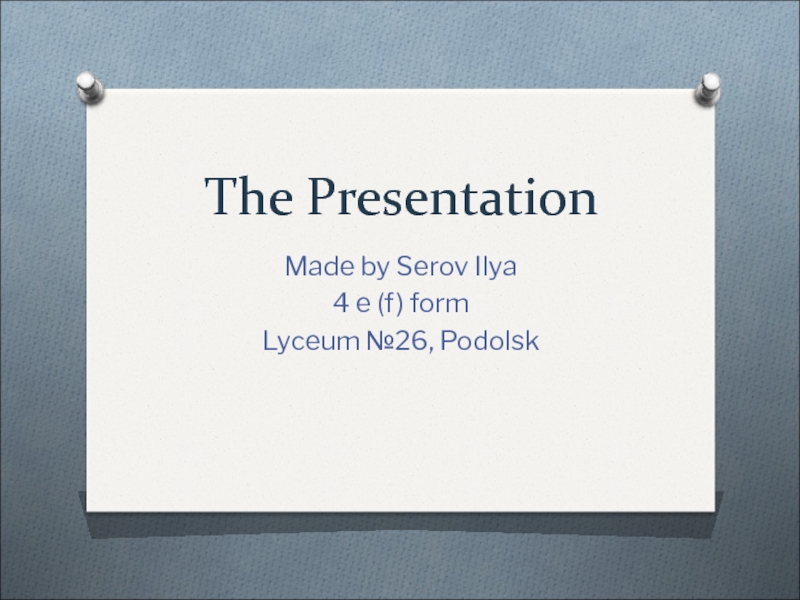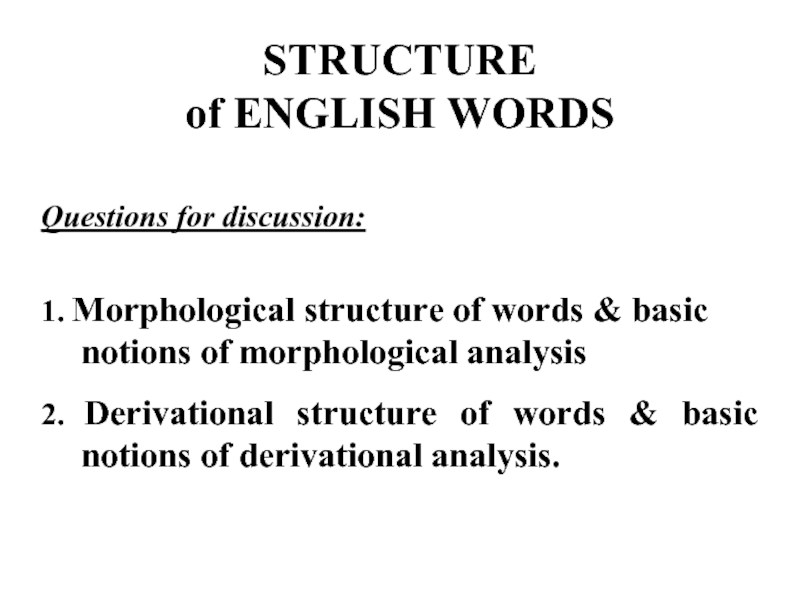- Главная
- Разное
- Дизайн
- Бизнес и предпринимательство
- Аналитика
- Образование
- Развлечения
- Красота и здоровье
- Финансы
- Государство
- Путешествия
- Спорт
- Недвижимость
- Армия
- Графика
- Культурология
- Еда и кулинария
- Лингвистика
- Английский язык
- Астрономия
- Алгебра
- Биология
- География
- Детские презентации
- Информатика
- История
- Литература
- Маркетинг
- Математика
- Медицина
- Менеджмент
- Музыка
- МХК
- Немецкий язык
- ОБЖ
- Обществознание
- Окружающий мир
- Педагогика
- Русский язык
- Технология
- Физика
- Философия
- Химия
- Шаблоны, картинки для презентаций
- Экология
- Экономика
- Юриспруденция
Word-groups vs. phraseological units презентация
Содержание
- 1. Word-groups vs. phraseological units
- 2. Word-groups vs. phraseological units Words put together
- 3. Valency of words The two
- 4. Lexical valency Words are used in certain
- 5. Lexical valency acquires special importance in case
- 6. The range of the lexical valency of
- 7. The restrictions of lexical valency of words
- 8. Syntactic valency - the aptness of a
- 9. The adjectives clever and intelligent are seen
- 10. The individual meanings of a polysemantic word
- 11. INTERDEPENDENCE OF STRUCTURE AND MEANING IN WORD-GROUPS
- 12. Structural formulas: V+N: (to build houses),
- 13. Syntactic structure of word-groups Word-groups may be
- 14. Word-groups may be classified according to their
- 15. Thus the structure of word-groups may also
- 16. The interdependence of the pattern and meaning
- 17. Notional member-words are habitually represented in conventional
- 18. Syntactic patterns are classified into: 1. predicative
- 19. Classification of word-groups ENDOCENTRIC WORD-GROUPS have one
- 20. 2. EXOCENTRIC WORD-GROUPS have no central component
- 21. TYPES OF MEANING OF WORD-GROUPS The lexical
- 22. The structural meaning of the word-group is
- 23. Interrelation of lexical and structural meaning in
- 24. It follows that the meaning of the
- 25. Polysemantic and monosemantic patterns Word-groups represented by
- 26. Structurally simple patterns are as a rule
- 27. MOTIVATION IN WORD-GROUPS A word-group is lexically-motivated
- 28. The degree of motivation can be different.
- 29. Completely motivated word-groups are correlated with certain
- 30. Seemingly identical word-groups are sometimes found to
- 31. Summary and Conclusions 1. Words put
- 32. 2. Lexical valency is the aptness of
- 33. Lexical valency of polysemantic words is observed
- 34. Syntactic valency is the aptness of a
- 35. The syntactic valency of a polysemantic word
- 36. Structurally, word-groups may be classified by the
- 37. Semantically all word-groups may be classified into
- 38. References Зыкова И.В. Практический курс английской лексикологии.
- 39. WORD-GROUPS
Слайд 2Word-groups vs. phraseological units
Words put together to form lexical units make
The largest two-facet lexical unit comprising more than one word is the word-group observed on the syntagmatic level of analysis. The degree of structural and semantic cohesion of word-groups may vary.
Functionally and semantically inseparable word-groups like at least, point of view, by means of, take place are phraseological units.
Semantically and structurally more independent word-groups a week ago, man of wisdom, take lessons, kind to people are defined as free or variable word-groups or phrases
Слайд 3Valency of words
The two main linguistic factors to be considered
1) the lexical valency of words
2) the syntactic valency of words.
Слайд 4Lexical valency
Words are used in certain lexical contexts, i.e. in combination
The noun question is often combined with such adjectives as vital, pressing, urgent, disputable, delicate, etc.
This noun is a component of a number of other word-groups, e.g. to raise a question, a question of great importance, a question of the agenda, a question of the day, and many others.
Lexical valency is the possibility of lexical-semantic connections of a word with other words.
Lexical collocability is the realisation in speech of the potential connections of a word with other words.
Слайд 5 Lexical valency acquires special importance in case of polysemy as through
heavy weight (safe, table, etc.),
heavy snow (storm, rain, etc.),
heavy drinker (eater, etc.),
heavy sleep (disappointment, sorrow, etc.),
heavy industry (tanks, etc.), and so on.
These word-groups are called collocations or such combinations of words which condition the realization of a certain meaning
Слайд 6The range of the lexical valency of words is linguistically restricted
Though the verbs lift and raise are treated as synonyms, only raise is collocated with the noun question.
The verb take may be interpreted as ‘grasp’, ’seize’, ‘catch’, etc. but
only take is found in collocations with the nouns examination, measures, precautions, etc.,
only catch in catch smb. napping
and grasp in grasp the truth.
Слайд 7The restrictions of lexical valency of words may manifest themselves in
The adjective heavy, e.g., is combined with the words food, meals, supper, etc. in the meaning ‘rich and difficult to digest’.
But not all the words with the same component of meaning can be combined with this adjective *heavy cheese or *heave sausage.
The lexical valence of correlated words in different languages is different: pot flowers – комнатные цветы
Слайд 8Syntactic valency -
the aptness of a word to appear in different
The minimal syntactic context in which words are used when brought together to form word-groups is described as the pattern of the word-groups.
E.g., the verb to offer can be followed by the infinitive (to offer to do smth) and the noun (to offer a cup of tea).
The verb to suggest can be followed by the gerund (to suggest doing smth) and the noun (to suggest an idea). The syntactic valency of these verbs is different.
Слайд 9The adjectives clever and intelligent are seen to possess different syntactic
Adjective-Preposition at+Noun: clever at mathematics, whereas intelligent can never be found in exactly the same word-group pattern.
The syntactic valency of correlated words in different languages is not identical, cf.: in English to influence a person, a decision, a choice (verb +noun) - in Russian влиять на человека, на решение, на выбор (verb+ preposition+noun).
Слайд 10The individual meanings of a polysemantic word may be described through
Keen + N: keen sight, hearing, etc.
Keen + on + N: keen on sports, tennis, etc.
Keen + V(inf): keen to know, to find out, etc.
Thus word-groups may be regarded as minimal syntactic (or syntagmatic) structures that operate as distinguishing clues for different meanings of a polysemantic word.
Слайд 11INTERDEPENDENCE OF STRUCTURE AND MEANING IN WORD-GROUPS
Syntactic structure and pattern
The syntactic structure of the word-group an old woman, a blue dress, clever man, red flower is an adjective and a noun, i.e. A+N;
The syntactic structure of the word-groups wash a car, read books, take books, build houses – as a verb and a noun, i.e. V+N.
The syntactic structure of the word-groups a touch of the sun, a matter of importance - as a preposition and a noun, i.e. N+prp+N.
Слайд 12Structural formulas:
V+N: (to build houses),
V+prp+N: (to rely on somebody),
V+N+prp+N:
V+N+V(inf.): (to make somebody work),
V+ V(inf.): (to get to know), and so on.
Слайд 13Syntactic structure of word-groups
Word-groups may be described through the order and
To see sth – verbal-nominal group;
To see to sth – (If you see to something that needs attention, you deal with it) verbal-prepositional-nominal, etc.
Слайд 14Word-groups may be classified according to their headwords into:
Nominal: red flower;
Adjectival:
Verbal: to speak well, etc.
The head is not necessarily the component that occurs first in the word-group: very great bravery, bravery in the struggle the noun bravery is the head whether followed or preceded by other words.
Слайд 15Thus the structure of word-groups may also be described in relation
In this case it is usual to speak of the pattern but not of formulas.
E.g., the patterns of the verbal groups to read a book, to wash a car are to read + N, to wash + N; to rely on somebody – to rely+on+N.
Syntactic pattern implies the description of the structure of the word-group in which a given word is used as its head.
Слайд 16The interdependence of the pattern and meaning of head-words can be
Three patterns with the verb ‘get’ as the head-word represent three different meanings of this verb:
get+N (get a letter, information, money, etc.);
get+ +to +N (get to Moscow, to the Institute, etc.);
get+N+V(inf.) (get somebody to come, to do the work, etc.).
Слайд 17Notional member-words are habitually represented in conventional symbols whereas prepositions and
anxious+for+ N (anxious for news),
anxious+about+N (anxious about his health).
the difference in the meaning of the head-word is conditioned by a difference in the pattern of the word-group in which this word is used
Слайд 18Syntactic patterns are classified into:
1. predicative word-groups have a syntactic structure
2. non-predicative word-groups do not comprise the subject and the predicate and may be subdivided into
a) subordinative (e.g. red flower, a man of wisdom);
b) coordinative (e.g. women and children, do or die).
Слайд 19Classification of word-groups
ENDOCENTRIC WORD-GROUPS
have one central member functionally equivalent to the
In the word-group blue dress, friendly to people, the head-words are the noun dress and the adjective friendly correspondingly.
According to their central members
word-groups may be classified into:
a) nominal groups or phrases (blue dress),
b) adjectival groups (friendly to people),
c) verbal groups (to sing well), etc.
Слайд 202. EXOCENTRIC WORD-GROUPS
have no central component and the distribution of the
For instance, the distribution of the word-groups side by side, at first, grow smaller is not identical with the distribution of their component-members, i.e. the component-members are not syntactically substitutable for the whole word-group.
Слайд 21TYPES OF MEANING OF WORD-GROUPS
The lexical meaning –
the combined lexical meaning
In most cases the lexical meanings of the word-group predominates over the lexical meanings of its components, e.g. blind alley, blind date.
Polysemantic words are used in word-groups only in one of their meanings. These meanings of the component words in such word-groups are mutually interdependent and inseparable. Semantic inseparability of word-groups treats them as self-contained lexical units.
Слайд 22The structural meaning
of the word-group is the meaning conveyed mainly by
The structural meaning is the meaning expressed by the pattern of the word-group.
Слайд 23 Interrelation of lexical and structural meaning in word-groups
The lexical and structural
Replacing day, night, week by another noun the sun structural meaning of the pattern does not change. The group all the sun long functions semantically as a unit of time. But the noun sun included in the group continues to carry the semantic value or the lexical meaning that it has in word-groups of other structural patterns (cf. the sun rays, African sun, etc.).
Слайд 24It follows that the meaning of the word-group is derived from
a factory hand − ‘a factory worker’
a hand bag − ‘a bag carried in the hand’.
Though the word hand makes part of both its lexical meaning and the role it plays in the structure of word-groups is different which accounts for the difference in the lexical and structural meaning of the word-groups under discussion.
Thus, the meaning of the word-group is derived from the combined lexical meanings of its constituents and is inseparable from the meaning of the pattern of their arrangement.
Слайд 25Polysemantic and monosemantic patterns
Word-groups represented by different structural formulas are as
Structurally identical patterns, e.g. heavy+N, may be representative of different meanings of the adjective heavy which is perceived in the word-groups heavy rain (snow, storm), cf. heavy smoker (drinker), heavy weight (table), etc. all of which have the same pattern — heavy+N.
Слайд 26Structurally simple patterns are as a rule polysemantic, i.e. representative of
The simplest verbal structure V+N and the corresponding pattern are as a rule polysemantic (compare, e.g. take+N (take tea, coffee); take the bus, the tram, take measures, precautions, etc.), whereas a more complex pattern, e.g. take+to+N is monosemantic (e.g. take to sports, to somebody).
Слайд 27MOTIVATION IN WORD-GROUPS
A word-group is lexically-motivated if the combined lexical meaning
If the combined lexical meaning of a word-group is not deducible from the lexical meanings of its constituent components, such a word-group is lexically non-motivated, e.g. red tape (official bureaucratic methods) take place (occur).
Слайд 28The degree of motivation can be different. Between the extremes of
E.g., the degree of lexical motivation in the nominal group black market is higher than in black death, but lower than in black dress, though none of the groups can be considered completely non-motivated.
Слайд 29Completely motivated word-groups are correlated with certain structural types of compound
Verbal groups having the structure V+N, e.g. to read books, to love music, etc., are habitually correlated with the compounds of the pattern N+(V+er) (book-reader, music-lover);
adjectival groups such as A + +prp+N (e.g. rich in oil, shy before girls) are correlated with the compounds of the pattern N+A, e.g. oil-rich, girl-shy.
Слайд 30Seemingly identical word-groups are sometimes found to be motivated or non-motivated
Completely non-motivated or partially motivated word-groups are called phraseological units or idioms.
Слайд 31Summary and Conclusions
1. Words put together to form lexical units
Слайд 322. Lexical valency is the aptness of a word to appear
Слайд 33Lexical valency of polysemantic words is observed in various collocations in
Слайд 34Syntactic valency is the aptness of a word to appear in
Слайд 35The syntactic valency of a polysemantic word may be observed in
Слайд 36Structurally, word-groups may be classified by the criterion of distribution into
Endocentric word-groups can be classified according to the head-word into nominal, adjectival, verbal and adverbial groups or phrases.
Слайд 37Semantically all word-groups may be classified into motivated and non-motivated. Non-motivated
Слайд 38References
Зыкова И.В. Практический курс английской лексикологии. М.: Академия, 2006. – С.
Гинзбург Р.З. Лексикология английского языка. М.: Высшая школа, 1979. – С. 64-74.
Антрушина Г.Б., Афанасьева О.В., Морозова Н.Н. Лексикология английского языка. М.: Дрофа, 2006. – С. 225- 256.
